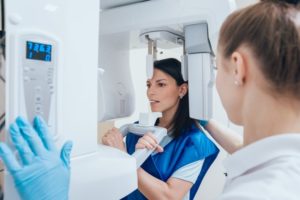What Technology is Used to Place Dental Implants in Framingham?
June 12, 2019
 Dental implants in Framingham are one of the most advanced restorative procedures you could get. Within the last decade, new treatment and technological advancements in the dental field have allowed this procedure to be painless and precise. In fact, implants boast a 95% success rate! With the use of the latest technology, you can know what to expect from the procedure, so you don’t have to take a gamble on your smile. Read on to learn about the tools and techniques that will make your implant placement a breeze.
Dental implants in Framingham are one of the most advanced restorative procedures you could get. Within the last decade, new treatment and technological advancements in the dental field have allowed this procedure to be painless and precise. In fact, implants boast a 95% success rate! With the use of the latest technology, you can know what to expect from the procedure, so you don’t have to take a gamble on your smile. Read on to learn about the tools and techniques that will make your implant placement a breeze.
Digital X-Rays
Traditional film X-ray machines are bulky, inconvenient, and don’t deliver the same image quality as the more advanced digital X-ray. When you’re getting dental implants, you often have to visit multiple professionals due to the various parts of the procedure. These digital images can be easily transferred and stored directly on a computer, keeping your team of professionals informed and all on the same page.
This modern tech also offers additional benefits such as:
- Less patient radiation exposure by as much as 90% compared to film X-rays.
- Takes less time to process the image. Plus, it can be enlarged, making it easier to detect issues and point them out.
- These images don’t require using harmful environment-impacting chemicals to produce.
- The image quality is significantly superior to film X-rays.
With these images, your dentist will be able to more strategically plan out your procedure for added accuracy.
3D Dental Cone Beam CT Scanner
A dental cone beam CT is a specific kind of equipment used to capture a 3D image of your teeth, jawbone, and oral tissues in a single X-ray image. This technology probably sounds unfamiliar because it is not routinely used for dental visits. The machine produces an X-ray beam that’s shaped like a cone to produce a large number of high definition images. This helps your implant dentist evaluate your health to see any jawbone deterioration, your unique facial structure, and your sinus placement. All of these factors can have a direct impact on the success of your implants.
Local Anesthetic
Because your implants will be surgically placed in your jaw, you’re going to have some kind of local anesthesia to help keep you comfortable during the procedure. The type that’s used will depend on factors such as the number of implants you need placed, what your oral surgeon suggests, and what option you’ll be most comfortable with. Local anesthesia is typically a great option for patients who are only having one or two implants placed.
The sedative that is typically administered with this option is either in the form of a pill or nitrous oxide, otherwise known as laughing gas. You’ll be conscious and aware of your surroundings, all while remaining relaxed and pain-free.
Every patient deserves high-quality treatment where they can feel comfortable and not worry about a painful experience. Dental implants are a modern restorative solution that boasts a laundry list of benefits. By using the latest technology, your dentist is able to precisely and painlessly give you teeth you can be proud to show off!
About the Author
Dr. Jean-Marie Biebuyk has completed one of the most prestigious periodontal programs at the Tufts School of Dental Medicine and has been providing patients with improved smiles since 1990. He has placed over 1,000 dental implants and specializes in gum disease treatment and reconstructive or cosmetic periodontal procedures. By using the latest technology in his field, he’s able to provide his patients with exceptional dental treatment. For questions or to schedule a consultation for dental implants, visit Framingham Premier Dental’s website or contact 508-875-0900.
No Comments
No comments yet.
RSS feed for comments on this post.
Sorry, the comment form is closed at this time.


